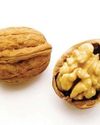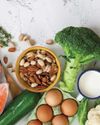
You’ve heard a lot about amino acids and how important they are for building muscle. But these building blocks of protein are responsible for many other critical systems and functions in the body, including neurotransmitter and hormone production, immune health, nervous system function, tissue repair, digestion, and reproduction.
When you eat foods that are high in protein, the body breaks them down into amino acids. Your body needs 20 different amino acids, which are categorized as essential, conditionally essential, or non-essential:
Essential amino acids are considered “essential” because your body can’t make them—you have to get them from your diet. There are nine of them: histidine, isoleucine, leucine, lysine, methionine, phenylalanine, threonine, tryptophan, and valine.
Non-essential amino acids are synthesized by the body, even if they’re not consumed in the diet. The eleven non-essential amino acids are alanine, arginine, asparagine, aspartic acid, cysteine, glutamic acid, glutamine, glycine, proline, serine, and tyrosine.
Conditionally essential amino acids, also called “conditional amino acids,” include some non-essential amino acids whose synthesis may be limited under certain conditions, including serious illness, injury, surgery, or extreme trauma or stress. For instance, tyrosine is considered an essential amino acid for people with phenylketonuria (PKU), a condition in which the body can’t synthesize tyrosine. Other conditional amino acids include arginine, cysteine, glutamine, glycine, proline, and serine.
This story is from the September 2020 edition of Better Nutrition.
Start your 7-day Magzter GOLD free trial to access thousands of curated premium stories, and 8,500+ magazines and newspapers.
Already a subscriber ? Sign In
This story is from the September 2020 edition of Better Nutrition.
Start your 7-day Magzter GOLD free trial to access thousands of curated premium stories, and 8,500+ magazines and newspapers.
Already a subscriber? Sign In

Strike A Healing Chord
Soothe your mind, body, and spirit with three simple sound therapy techniques for self-care.

Laura's Gourmet Granola
If you’re tired of granola that’s more candy than health food, chef and entrepreneur Laura Briscoe’s offerings are just what you’ve been looking for.

News Bites
Caffeine, Peanuts, CoQ10, and Iron Deficiency.

The Overlooked Keys to a Healthy Gallbladder
Keep your bile thin and free-flowing by focusing on supportive foods, supplements, and physical activity.

Go Nutty This Year
This über-healthy alternative to traditional lattes features homemadewalnut “mylk,” along with antioxidant-rich green tea and berries.

The Three Stages of Infection
What you need before, during and after an illness, and why you need different fixes for each stage.
Taming the Flames
How to beat back chronic inflammation and protect yourself from related disease.

Deconstructing the Flexitarian Diet
How being a part-time vegan can make you healthier.

Brain Regain
How one senior used a leptin-focused diet (high-fat, no carbs) to recover from a cognitive injury, reconnect with his family, and reclaim his health.

Healthy Aging— Head To Toe
Science-backed supplements to protect all your parts.